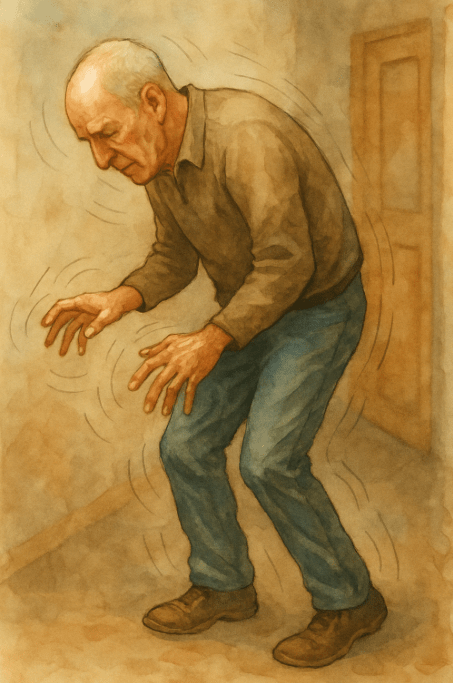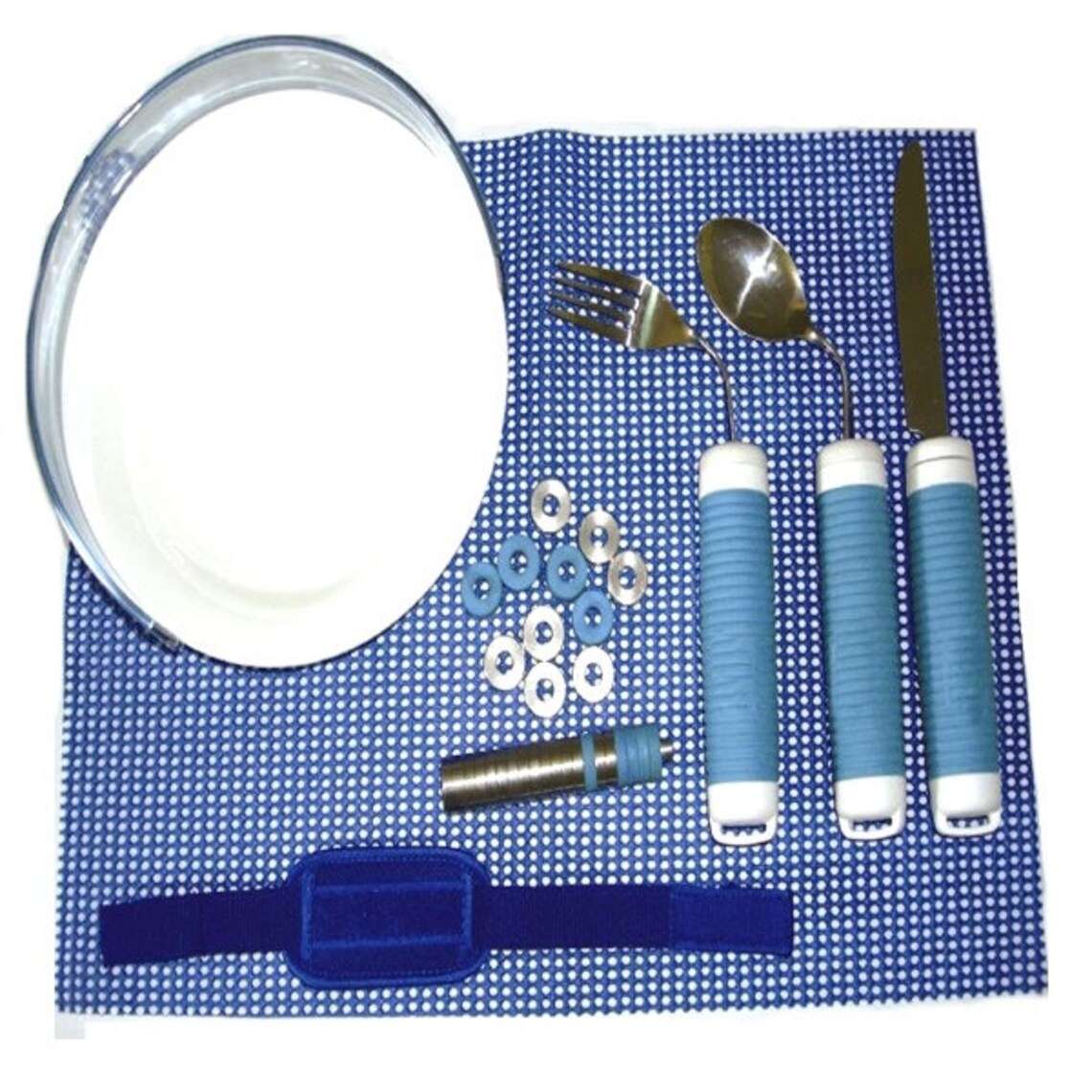Grieving Parkinson’s Disease: Mourning the Hands That Once Held Steady
Grief with Parkinson’s unfolds slowly, watching tremors steal strength, memories blur, and the life you built together shift in painful silence.

This post blends real grief with grounded knowledge. It isn’t clinical. It isn’t distant. It’s meant to sit beside you—not above you. The story you’ll read is meant to reflect what so many feel when living through or witnessing this condition: confusion, exhaustion, and quiet forms of courage.
If what you read feels familiar, please speak with your doctor. Your pain deserves more than silence.
His Hands Shook, but His Love for Us Never Did
He used to be precise…a true craftsman, the sort of man who could mend a broken watch without a single diagram, relying solely on a steady hand and silence.
We began to notice small things. His fingers twitched when he thought no one was looking. There was a slowness in his blinks, and a stiffness in his step, as if his body had quietly betrayed him in the night.
He brushed it off. “Just getting old,” he would say. But age doesn’t alter your handwriting. It doesn’t shrink your voice. It doesn’t make you forget where your feet are meant to go.
Then one day, he dropped his coffee mug. He just let it fall. When it shattered, he looked down at it as if it had betrayed him, too.
Next came the diagnosis: Parkinson’s Disease…
🧠 Symptoms:
motor:
– Tremor (pill-rolling motion, often at rest)
– Slowed movement (bradykinesia)
– Muscle rigidity and stiffness
– Stooped posture and poor balance
– Reduced arm swing while walking
– Changes in speech (soft, rapid, monotone)
– Small or cramped handwriting (micrographia)
nonmotor:
– Depression, anxiety, or apathy
– Cognitive decline, memory issues, or dementia (in late stages)
– Sleep disturbances (REM behavior disorder, insomnia, daytime sleepiness)
– Constipation and gastrointestinal issues
– Loss of sense of smell (anosmia)
– Frequent urination or urinary urgency
– Fatigue
– Sexual dysfunction
– Pain or cramps
At first, we didn’t cry. The neurologist spoke with a clinical calm, talking of dopamine, motor circuits, levodopa response. We nodded, accepted the pamphlets, scheduled follow-ups.
But inside? Something broke…
Parkinson’s isn’t just about shaking hands; it’s a slow, full-body collapse, one second at a time.
He began to walk differently. Not slower, but smaller, shuffling, cautious, as if the ground beneath him had become untrustworthy.
He stopped writing notes, tying his shoes, and reaching for doorknobs without a breath beforehand.
Yet there was one thing he never stopped doing: loving us.
He showed up, even when his limbs refused to cooperate. Even when getting out of bed felt like moving a stone. Even when his meds wore off early and the tremors took over mid-sentence.
He continued to tell the same silly jokes. He held our hands, even when his fingers curled too tightly. He traced the contours of our faces with his eyes, as if memory alone could shield us from forgetfulness.
On some nights, I would find him at the kitchen table, silent, staring at his hands. I knew then…he wasn’t mourning what they couldn’t do; he was mourning what they once could.
Complications:
– Cognitive issues and dementia
– Depression, emotional changes
– Swallowing, chewing, and speech difficulties
– Sleep disorders
– Bladder and bowel dysfunction
– Orthostatic hypotension (low blood pressure upon standing)
– Fatigue and chronic pain
– Hallucinations and delusions (advanced stages or medication side effect)
Causes:
– Loss of dopamine-producing neurons in the brain (substantia nigra)
– Presence of Lewy bodies (clumps of alpha-synuclein protein)
– Genetic mutations (e.g., LRRK2, SNCA, Parkin—rare in general population)
– Environmental triggers (e.g., pesticide exposure, well water, MPTP toxin)
But never once did he let it make him bitter. Not when it stole his balance. Not when his voice began to fade. Not when tremors turned prayer into mishap.
He lived with it, not beneath it. That’s the part people rarely discuss.
He never ceased to love. Never stopped trying.
“The world watched his body falter out of rhythm. But inside? He remained steady, constant, stronger than the shaking would ever allow.”
We didn’t cry…not at first. The neurologist spoke with clinical calm, mentioning dopamine, motor circuits, and levodopa response. We nodded, took the pamphlets, and scheduled the follow-ups.
But inside? Something cracked…
Parkinson’s isn’t just about shaking hands. It’s a full-body collapse, one slow second at a time.
He started walking differently…not slower, but smaller. Shuffling, cautious, as though the earth had become less trustworthy.
He stopped writing notes. Stopped tying his own shoes. Stopped reaching for doorknobs without pausing to take a breath.
Yet here’s what he didn’t stop: loving us…
He showed up, even when his limbs didn’t. Even when getting out of bed felt like lifting a stone. Even when his meds wore off early, and the tremors took over mid-sentence.
He continued telling the same silly jokes. Kept holding our hands, even when his fingers curled too tightly. Kept tracing the edges of our faces with his eyes, as if memory alone could shield us from forgetting.
Some nights, I’d find him at the kitchen table…silent, staring at his hands. And I knew he wasn’t mourning what they couldn’t do; he was mourning what they used to.
But he never let it make him bitter, not once. Even when it stole his balance. Even when his voice started to fade. Even when the tremors transformed prayer into an accident.
He lived with it…not beneath it. That’s the part people often overlook.
He never stopped loving. Never stopped trying…
Risk Factors:
– Age (most common after 60, rare before 50)
– Sex (men are more likely to develop it)
– Family history
– Exposure to toxins (pesticides, industrial chemicals)
– Head injury
The world witnessed his body fall out of rhythm. But inside? He remained steady, constant, stronger than the shaking would ever admit.
📘 Diagnosis & Treatment
diagnosis:
– Neurological exam and symptom history (no definitive test)
– Dopamine transporter (DAT) scan to support diagnosis
– MRI or CT scan (to rule out other conditions)
– Alpha-synuclein amplification test (experimental, detects Lewy body protein)
– Trial of levodopa to assess medication response
– Genetic testing (in early-onset or family cases)
treatment:
medications:
– **Levodopa/Carbidopa (Sinemet, Rytary)** – mainstay therapy
– **Dopamine agonists** – pramipexole, rotigotine patch, apomorphine
– **MAO-B inhibitors** – selegiline, rasagiline, safinamide
– **COMT inhibitors** – entacapone, opicapone
– **Amantadine** – helps dyskinesia and fatigue
– **Anticholinergics** – limited use for tremor control
– **Istradefylline** – adenosine A2A receptor antagonist for “off” episodes
– **Pimavanserin** – treats Parkinson’s-related hallucinations
advanced treatments:
– **Deep Brain Stimulation (DBS)** – implanted electrodes to control symptoms
– **Duopa** – intestinal gel infusion of levodopa/carbidopa
– **MRI-Guided Focused Ultrasound** – tremor relief in selected patients
rehabilitation:
– Physical therapy for mobility and balance
– Occupational therapy for daily tasks
– Speech therapy for voice and swallowing
– Cognitive behavioral therapy (CBT) for mood and coping
lifestyle and home remedies:
– Regular aerobic exercise
– Fiber-rich diet and hydration (to ease constipation)
– Fall prevention strategies
– Sleep hygiene routines
– Mental stimulation (reading, puzzles, music)
alternative therapies:
– Tai chi and yoga (balance, flexibility)
– Massage, meditation, and relaxation techniques
– Alexander technique (movement retraining)
– Support groups for emotional wellness
coping and support:
– Depression is common—seek therapy or medication if needed
– Support groups (local or online) offer shared experience and education
– Maintain as much independence and routine as possible
– Family and caregiver involvement is critical for long-term care
– Mental health support can ease emotional strain of progressive symptoms
I know this is heavy, and I understand that the road ahead may feel like a tangle of loss and unanswered questions. But please hear this: you are not broken because you are hurting; you are not weak because you are afraid. You are living through something real, and survival itself is a kind of grace. You are allowed to struggle, you are allowed to hope, and you are allowed to not have all the answers today. Whatever comes next, you do not face it empty-handed; you carry every moment of love that shaped you, and that will always be enough to keep going.
🎀 Gifts to help With Parkinson’s Disease
🏥 Everyday Comforts for Everyday Battles
Managing Parkinson’s Disease often means needing a little extra help.
Sometimes it’s about restoring dignity, ease, or simply getting through the day with less pain.
These carefully chosen tools aren’t just items; they’re small bridges back to living.
This section is about finding practical support, never shame.
Weighted Utensil Set for Tremors – Dignity at Mealtime When the Hands Don’t Obey
Parkinson’s doesn’t just shake the hands—it makes eating feel like performance art. This weighted utensil set helps stabilize movement, reduce spillage, and return a sense of calm to meals. Designed for grip, balance, and subtlety. Because nourishment should never be an ordeal.
🌿 Paths to Healing Beyond the Map
Sometimes traditional medicine isn’t enough.
If you’re exploring gentle, alternative options to help with Parkinson’s Disease,
you might find comfort in plant-based compounds like **CBD or CBG**.
*This section is not medical advice, just a door left open.*
USA Medical Pain + Calm Total Pack – Systemic Support for Muscles That Lock and Minds That Won’t
Parkinson’s wears out more than muscles—it robs sleep, exhausts nerves, and grinds away at emotional resilience. This Total Pack offers CBD, calming adaptogens, and mild anti-inflammatory support to ease rigidity and help the nervous system breathe between tremors. It won’t restore dopamine. But it may offer rest to the body still carrying the weight.
Need a Different Path Forward?
Every journey through grief looks different. Choose the next step that speaks to where you are now:
When You're Ready to Start Healing
Healing doesn’t mean forgetting.
It means finding small ways to carry your grief with strength and grace.
These are the stories, tools, and gentle steps to begin walking forward…at your own pace.
When You're Still in the Thick of It
Sometimes healing feels like a lie.
If you’re not ready to move on…if the pain still roars louder than the world wants to hear…this is the place where you’re allowed to feel it.
No sugarcoating. No pretending. Just truth.
When You're Holding on to Who’s Still Here
Grief reminds us to love louder.
If someone you love is still with you, this is your place to celebrate them, honor them, and create new memories while there’s still time.
Joy and sorrow can live side by side.






